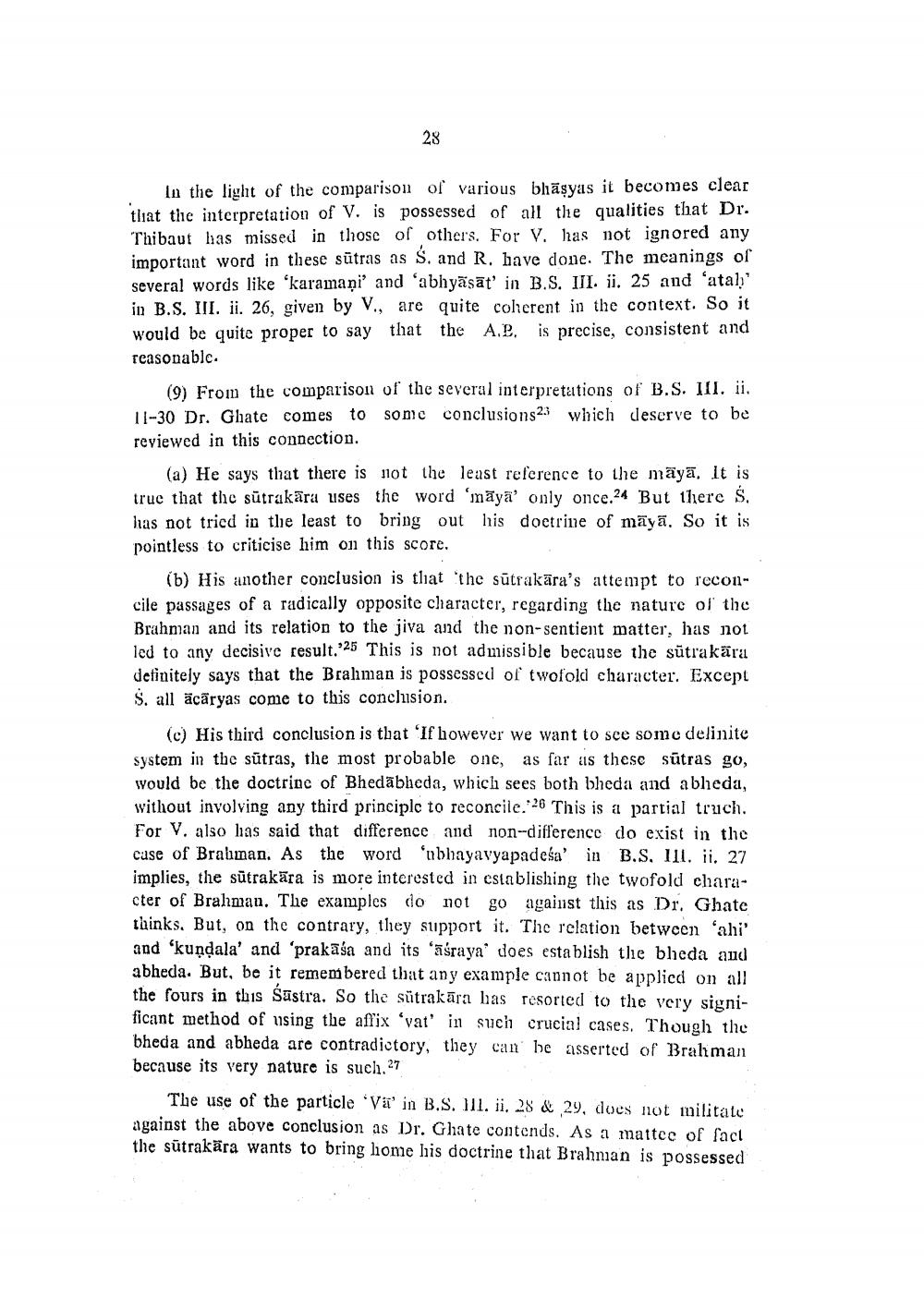________________
28
In the light of the comparison of various bhäsyas it becomes clear that the interpretation of V. is possessed of all the qualities that Dr. Thibaut has missed in those of others. For V. has not ignored any important word in these sütras as S. and R. have done. The meanings of several words like 'karamapi' and 'abhyasat' in B.S. III. ii. 25 and 'atah" in B.S. III. ii. 26, given by V., are quite coherent in the context. So it would be quite proper to say that the A.P. is precise, consistent and reasonable.
(9) From the comparison of the several interpretations of B.S. III. . 11-30 Dr. Ghate comes to some conclusions23 which deserve to be reviewed in this connection.
(a) He says that there is not the least reference to the maya, It is true that the sutrakara uses the word 'maya' only once.24 But there S. has not tried in the least to bring out his doctrine of maya. So it is pointless to criticise him on this score.
(b) His another conclusion is that the sutrakara's attempt to reconcile passages of a radically opposite character, regarding the nature of the Brahman and its relation to the jiva and the non-sentient matter, has not led to any decisive result. 25 This is not admissible because the sutrakāra definitely says that the Brahman is possessed of twofold character. Except S. all äcāryas come to this conclusion.
(c) His third conclusion is that 'If however we want to see some delinite system in the sutras, the most probable one, as far as these sutras go, would be the doctrine of Bhedabheda, which sees both bheda and abheda, without involving any third principle to reconcile.'20 This is a partial truch. For V. also has said that difference and non-difference do exist in the case of Brabman. As the word 'abhayavyapadela' in B.S. 11. ii. 27 implies, the sûtrakära is more interested in establishing the twofold character of Brahman. The examples do not go against this as Dr. Ghate thinks. But, on the contrary, they support it. The relation between 'ahi and 'kundala' and 'prakasa and its 'Hiraya" does establish the bheda and abheda. But, be it remembered that any example cannot be applied on all the fours in this Sastra. So the sütrakara has resorted to the very significant method of using the affix 'vat' in such crucial cases. Though the bheda and abheda are contradictory, they can he asserted of Brahman because its very nature is such.27
The use of the particle 'Va' in B.S. III. ii. 28 & 29, does not militate against the above conclusion as Dr. Ghate contends. As a matter of fact the sutrakära wants to bring home his doctrine that Brahman is possessed




